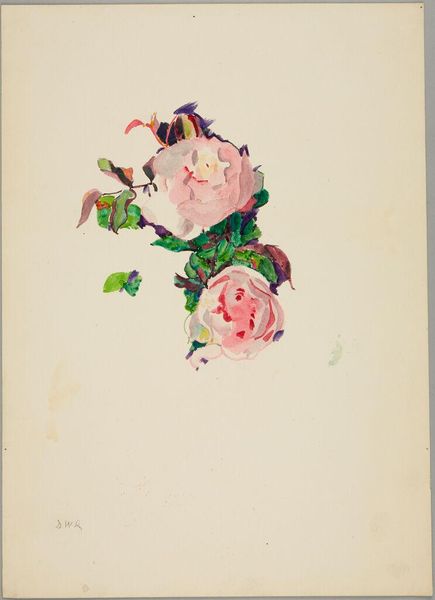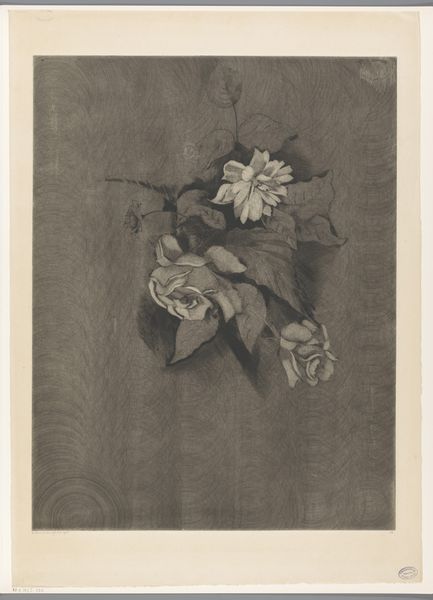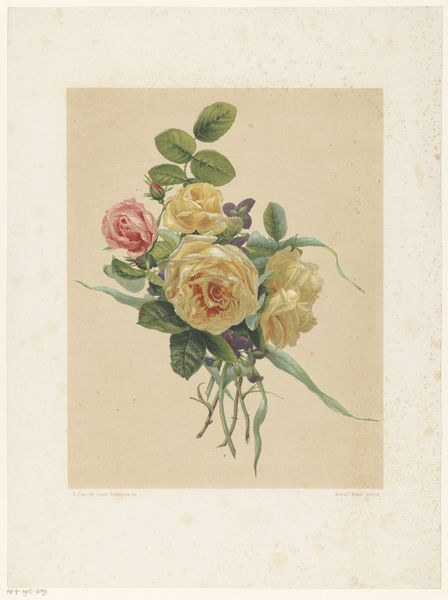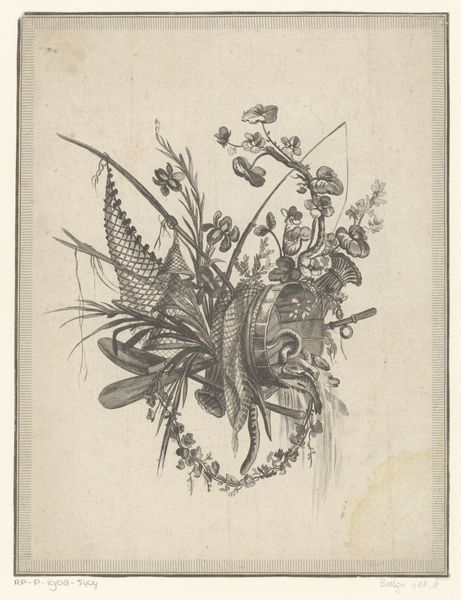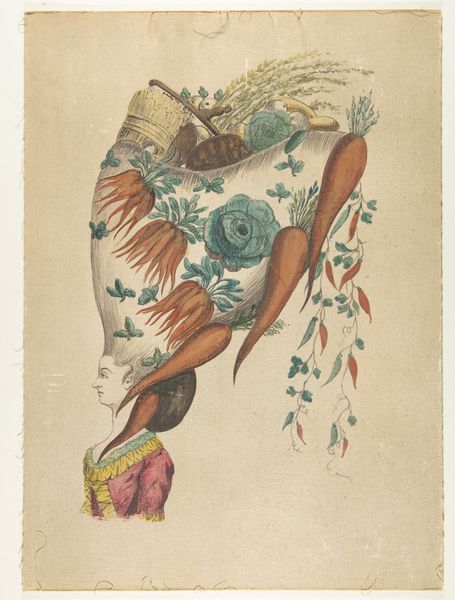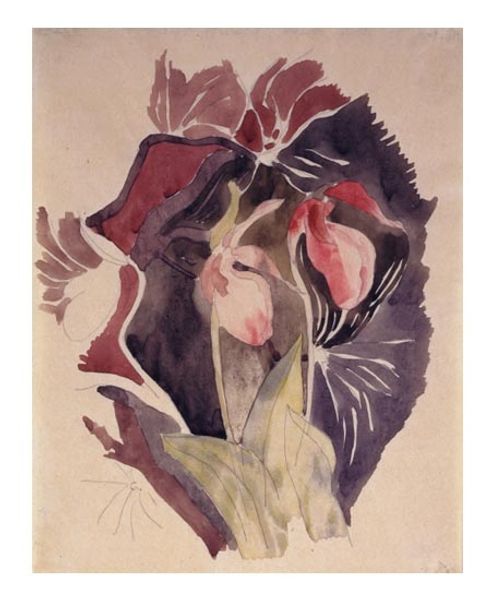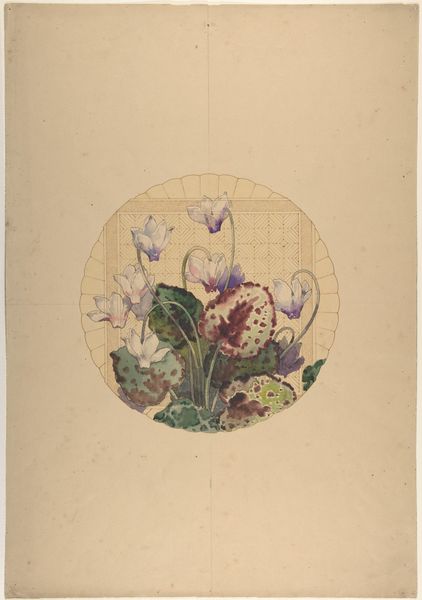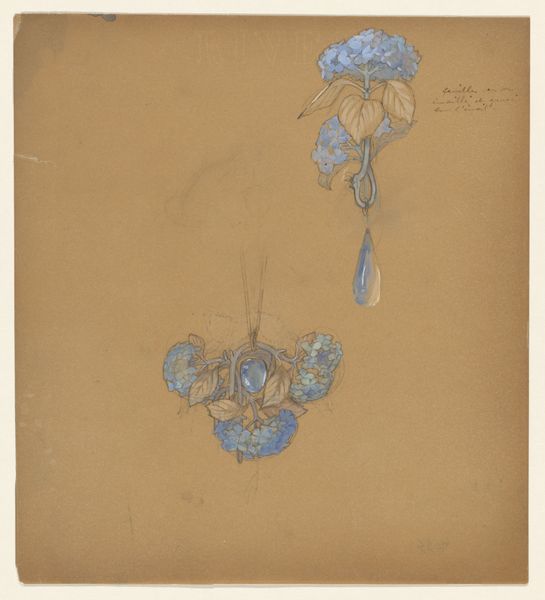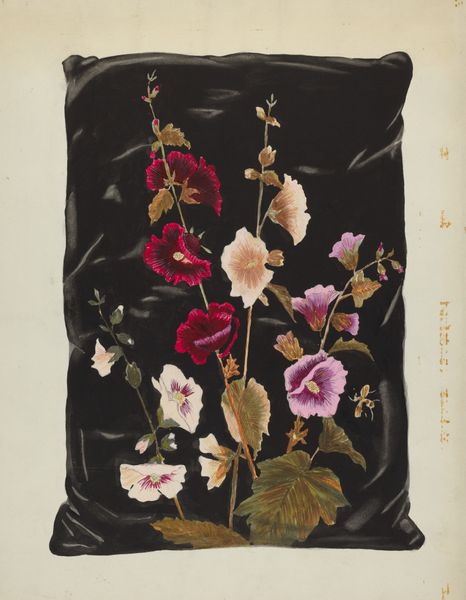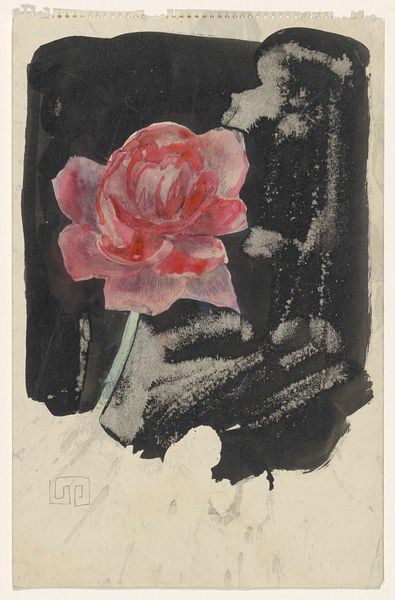
drawing, print, watercolor
#
portrait
#
drawing
#
water colours
# print
#
watercolor
Dimensions: 21 1/4 x 15 7/8 in. (54 x 40.4 cm)
Copyright: Public Domain
Curator: What strikes me first is the fragility of this image—a vase that appears to be breaking, juxtaposed with delicate roses in full bloom. There’s a distinct melancholy. Editor: Indeed. You are viewing “Vase of Flowers,” a watercolor that likely originated sometime in the 19th century. It now resides here at the Metropolitan Museum. Curator: The symbolism is so layered! Roses, traditionally emblems of love and beauty, emerge from a broken vessel. This poses some interesting questions about how beauty arises. Is it about withstanding damage and loss, or about cherishing what is fleeting? Editor: And I’m fascinated by the cultural implications of that vase itself. Note the classical, almost Roman design, with the grotesque mask ornament. It's intriguing. This speaks to a cultural fascination, even reverence, for the past during the 19th century, yet positioned to emphasize impermanence and loss, decay in fact. Curator: Absolutely! That broken edge creates a stark contrast with the perfectly rendered roses. It’s a dialogue between the permanent and the transient. The artist uses the visual language of memento mori but through the lens of natural beauty. It makes us reflect on life's phases and beauty in various shapes, decay included. Editor: Moreover, consider how such imagery functions within the art market of the time. Still life paintings, especially floral arrangements, enjoyed popularity for domestic decoration. But to depict that type of symbolism to it suggests the artist engaged with a particular philosophical trend. This painting feels far more personal and layered than just a piece meant for decoration. Curator: I agree, this image feels charged with a deeply felt emotional meaning. And the deliberate placement of the flowers, almost cascading out as if overflowing with beauty, creates such a powerful impact. Even now, many centuries later, it feels surprisingly emotive and thought-provoking. Editor: Exactly. Examining this piece allows us to glimpse at not only an art object, but the socio-cultural values embedded in this era and the psychological depth rendered by its artist, prompting introspection. It’s why historical and symbolic investigations are vital.
Comments
No comments
Be the first to comment and join the conversation on the ultimate creative platform.
